(1046 products available)



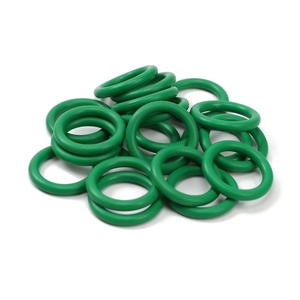










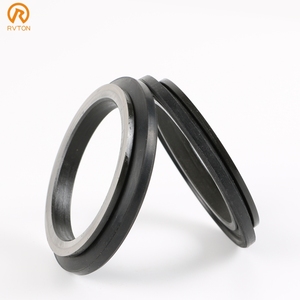



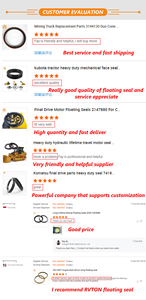










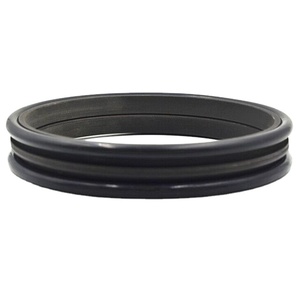

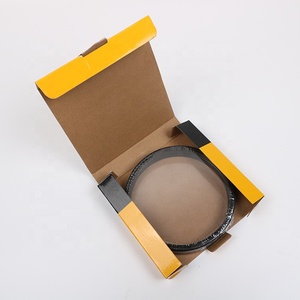
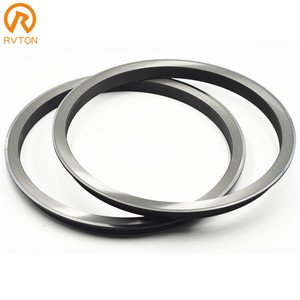

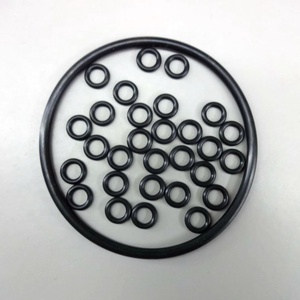
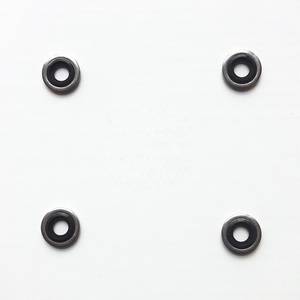










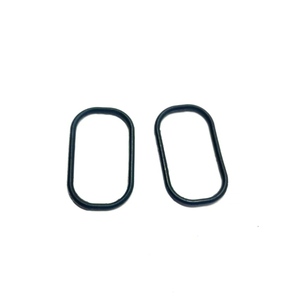

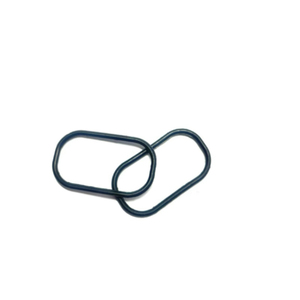


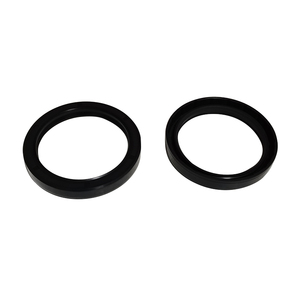
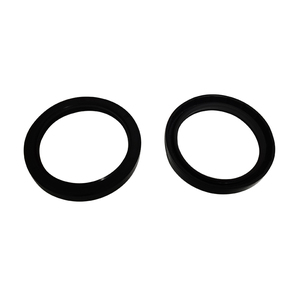

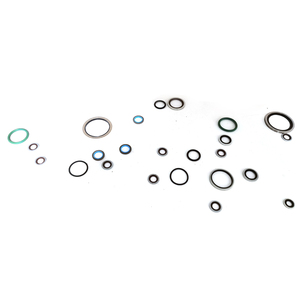
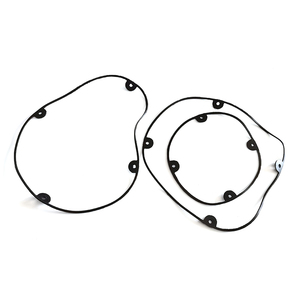
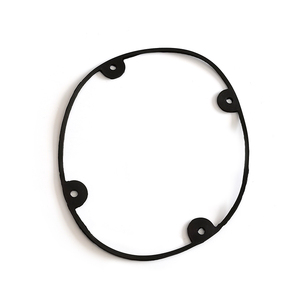





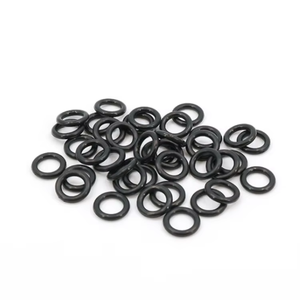















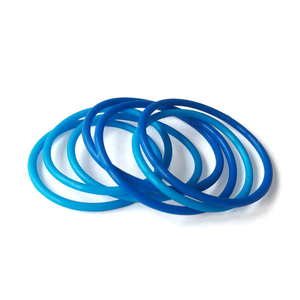











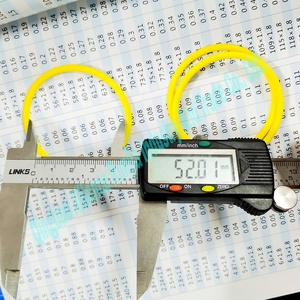


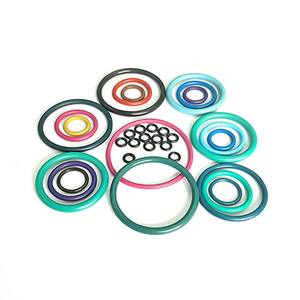




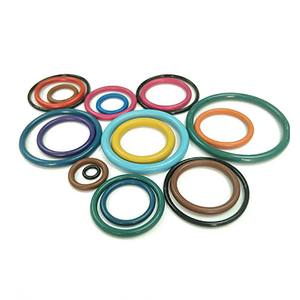









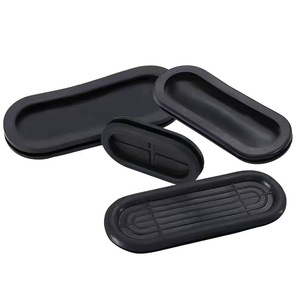




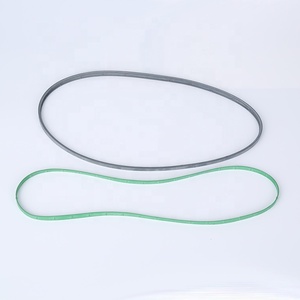

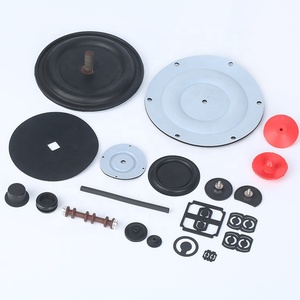

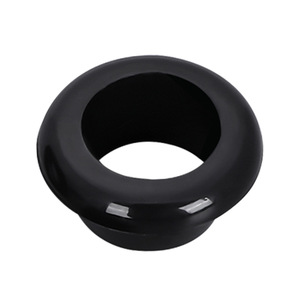

































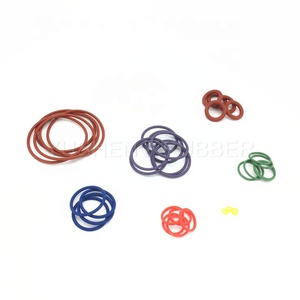
















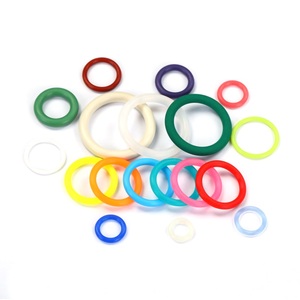

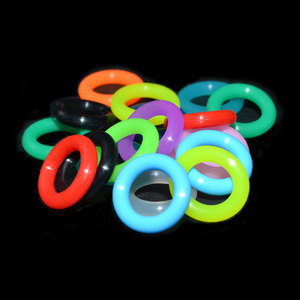
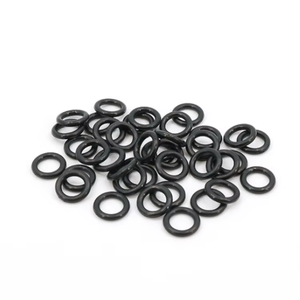

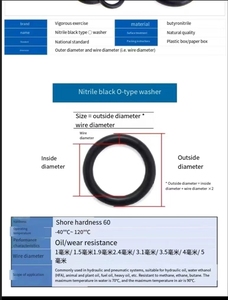




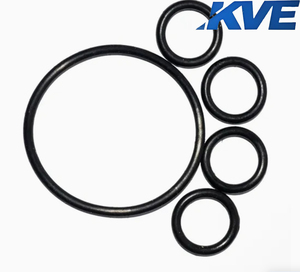



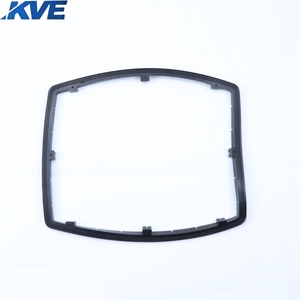
Nitrile Rubber O-Rings
Nitrile, which is frequently referred to as Buna-N because of its polymer name, is one of the most widely used types of oval rubber o rings. O-rings made of nitrile rubber have good resistance to the majority of petroleum-based fuels and oils. Due to their resistance to abrasion, these rings are suitable in settings where there is repeated stress. Often utilized in the automobile, aerospace, and oil and gas sectors, Nitrile O-rings are rubber seals that are excellent at sealing in fluids for these businesses.
Silicone Rubber O-Rings
Due to their adaptability to temperature extremes, silicone rubber O-rings are frequently employed in applications with retaliatory fluctuations in temperature. Silicone O-rings maintain their pliability and sealing qualities even in extremely cold or hot conditions. In the automobile, medical, and food processing sectors, where hygiene is critical and excessive temperatures may be an issue, silicone O-rings are frequently employed.
Fluorocarbon (FKM) Rubber O-Rings
O-rings made of fluorocarbon rubber are also referred to as FKM or Viton. These O-rings are perfect for harsh environments because they are made to resist extreme temperatures and a wide range of chemicals. Fluorocarbon O-rings are widely used in sealing solutions for the chemical processing, pharmaceutical, and automotive industries because of their capacity to resist acids, solvents, and aggressive chemicals. They are a product that requires very low compression set values for longevity.
Neoprene Rubber O-Rings
Because of their adaptability and endurance, neoprene rubber O-rings are employed in many different businesses. Due to its resistance to ozone, UV radiation, and weathering, neoprene is ideal for outdoor applications. Construction, refrigeration, and marine services frequently utilize neoprene O-rings to provide seals for water and other fluids while ensuring rubber sealing rings durability in challenging settings.
EPDM Rubber O-Rings
Ethylene Propylene Diene Monomer (EPDM) rubber O-rings have excellent resistance to ozone, UV radiation, and temperature extremes. Because of their ability to withstand heat, water, and environmental degradation, they are frequently employed in outdoor and automotive applications. The construction, plumbing, and electrical sectors frequently utilize EPDM O-rings to produce watertight seals in both inside and outdoor settings.
Automotive Industry
O-rings are frequently employed in the automotive sector. Located in engines, fuel systems, and transmissions, these seals ensure that liquids like oil, fuel, and coolant don't leak. Rubber oval O-rings contribute to system efficiency and lifespan by preventing leaks and retaining fluids where they should be. A few automobile sectors frequently require high resistance to heat, chemicals, and petroleum-based fuels. Fluorocarbon and nitrile rubber O-rings are frequently used by manufacturers in this industry due to their proficiency in withstanding these situations.
Aerospace Industry
The aerospace industry demands extreme reliability and performance from its components due to the demanding environments in which they operate. Rubber O-rings are used in various applications, including fuel systems, hydraulics, and aircraft doors. Silicone and nitrile rubber o-rings are frequently used to withstand extreme temperatures and maintain sealing properties during severe flight conditions. Because of their unrivaled capacity to maintain sealing integrity in this industry, oval rings are a famous and frequently utilized application.
Oil and Gas Industry
The oil and gas sector greatly relies on rubber O-rings to ensure system security. FKM and nitrile rubber O-rings are essential seals for rotating equipment, valves, and other machinery that deal with harsh chemicals and high pressures. These O-rings withstand harsh chemicals and extreme temperatures, making them invaluable in protecting equipment from leaks and maintaining operational efficiency. Their ability to ensure the safety and effectiveness of processes in this high-stakes industry makes them a critical component.
Medical and Pharmaceutical Industry
O-rings are utilized as vital components in many medical devices, pumps, and containers that make contact with fluids in the healthcare and pharmaceutical industries. These segments require extreme hygiene, and the right materials for O-rings are crucial. For example, silicone and EPDM rubber O-rings are employed in this industry due to their non-toxicity, temperature tolerance, and resistance to sterilization methods. O-rings are vital for maintaining sealing integrity and assurance of safety in the medical and pharmaceutical industries.
Industrial and Manufacturing Industry
O-rings are widely used in industrial equipment such as pumps, motors, and hydraulic systems. Neoprene and nitrile rubber O-rings are often used in these applications due to their durability and resistance to oils, greases, and various industrial chemicals. In this sector, O-rings contribute to operational efficiency by preventing leaks and minimizing downtime due to maintenance needs. They also enhance the longevity of equipment by providing reliable seals under demanding conditions.
Shape and Design
The rings for sealing have a characteristic oval form, which gives them an attractive and reliable rubber seal for different applications. An O-ring's cross-section is circular, but if the inner section forms an oval, it has different surface properties, affecting the sealing character. This unique shape improves the contact area with mating surfaces, frequently enhancing the seal's performance and necessitating optimization in leak prevention.
Material Composition
Rubber O-rings are produced in various resilient materials to serve the intended application. Common materials include Nitrile rubber (Buna-N), silicone rubber, and neoprene, which are among the materials used due to their resistance to heat, chemicals, and environmental factors. Each material is chosen based on the operating conditions of the application, such as temperature range, fluid exposure, and atmospheric elements, to ensure optimal performance.
Commercial Oval Rubber O-Rings
The Nitrile rubber is frequently used in applications that require sealing for oil, fuel, and other petroleum-based liquids. Due to its resilience, Nitrile contains expansive resistances to the abrasion typically encountered in various industrial applications. Silicone rubber O-rings are standard in extreme temperature range services. They have properties of elasticity and resilience, which provide effective sealing in low and high temperatures. EPDM rubber O-rings are another preferred choice of seals in automobiles and outdoor applications because of their resistance to ozone, UV radiation, and moisture.
It is vital for the performance and durability of the rubber oval O-ring to correctly install it in the appropriate application. These are the steps to follow:
Preparation
Remove any old seals as well as dirt from the area in which the O-ring will be installed. This guarantees the O-ring will have complete contact with the surfaces to produce a seal. Make sure the O-ring is the proper size for the application before doing the installation. Incorrect-sized O-rings may result in leaks owing to improper sealing.
Lubrication
Depending on the kind of material used, lightly coating the O-ring with a compatible lubricant, such as silicone grease or the fluid it will seal, may be required for easier installation and to prevent damage to the O-ring during installation. This process is very important for applications where O-rings made of such materials as Nitrile and EPDM are installed, as they require lubrication to decrease friction, especially on hard surfaces.
Placement
Carefully slide the O-ring into the groove or around the fitting where it will be installed. Make sure it is correctly situated and evenly distributed in the groove without twisting or pinching the ring. An equal distribution ensures that the seal is uniform across all contact surfaces.
Installation
Once the O-ring is correctly placed, gently but firmly bring the two mating surfaces together. Avoid forcing the components as this can damage the O-ring or misalign it. If necessary, use tools designed for the application to properly secure the O-ring without compromising its integrity. Proper installation is crucial for achieving a dependable seal and preventing leaks.
The rubber sealing ring can be very useful in applications that require efficient and well-done sealing. Here are the steps:
Assess Compatibility
Make sure the oval rubber seal is compatible with the kind of application that will be used. With regard to temperature, fluid exposure, and atmospheric elements, find out if the O-ring material—Nitrile, EPDM, Silicone—fits the available conditions. Using a suitable O-ring is important for ensuring efficiency and effectiveness in sealing and preventing leaks.
Installation Process in Applications
Properly prepare the area where the O-ring will be installed by following the steps mentioned in the installation section. This ensures that both the O-ring and the installation surface are ready for use.
Integration with Mating Surfaces
Bring together the mating surfaces of the equipment or assembly where the O-ring will be used. The presence of the O-ring in the joint causes it to fill the space between the two surfaces to form a seal. An O-ring creates a barrier against the environment, preventing the intrusion of contaminants and the escape of fluids or gases. The effectiveness of oval sealing rings particularly comes into play in low-pressure situations or where there is a tendency for elements to infiltrate, such as in pipes, containers, or junctions.
Monitoring Seal Performance
Regularly check the O-ring in use for signs of wear, deterioration, or damage. Maintenance of the O-ring is vital to maintain sealing integrity in applications subjected to extreme operating conditions. Look out for cracks, breaks, or abrasions on the O-ring due to reaffirming contact with chemicals, heat, or mechanical elements. Seal performance can, therefore, be maximized, and unanticipated downtime or disasters in critical operations avoided.
Regular Inspection
Perform frequent and periodic checks of the rubber O-ring, looking for signs of wear, age and tear, or physical damage like cracks or breaks. Particularly watch for those O-rings exposed to such elements as chemicals, heat, or mechanical abrasion. Correcting small mistakes will guarantee that the O-ring performs well and will prevent unexpected breakdowns.
Proper Lubrication
Ensure that the O-ring has lubrication proportional to the amount of work it is doing and the materials it is made of. Use lubricants compatible with the O-ring material, such as silicone grease for silicone O-rings or oil-based lubricants for nitrile O-rings. Proper lubrication reduces friction during operation, which extends the life of the O-ring and makes it less likely to dry out and crack.
Environmental Protection
If the O-ring is exposed to adverse atmospheric conditions such as dirt and debris, or hostile elements like ozone and UV rays, it is advisable to shield it. Consider using guards, shields, or protective covers in outdoor or hostile environments. Keeping the area around the O-ring clean and free of contaminants will decrease the O-ring's exposure to elements that can cause premature aging or damage.
Replacement
If it is determined that the seal has reached the end of its functional capability, replace it with a new same-sized rubber oval O-ring. When changing, take care not to harm contact surfaces or equipment. Stocks of spares are available in applications that are critical to the business and may suffer huge losses if they halt work.
The correct performance of an O-ring in so many applications and the safety implications of this performance mean that quality is ensured in its manufacture and installation. Here are important works related to quality and safety considerations:
Material Selection
The materials chosen for the manufacturing of rubber oval O-rings should possess the relevant qualities of the demands of their application. Such materials include Nitrile, EPDM, Silicone, and Fluorocarbon. They are chosen for O-rings due to the many demands they have to resist: heat, chemical, environmental degradation, and ozone. Non-durable materials may cause considerable leaks, which are dangerous to assets and operations, so the hazardous effects of such leaks need to be contained. This means they need to be effective in such situations that safety and process continuity are of concern.
Manufacturing Standards
O-ring manufacturers must follow stringent quality control measures, including certifications such as ISO, to ensure consistency in product performance. Any small variation in size, material composition, or surface finish can significantly affect the O-ring's ability to create an effective seal. For critical applications, such as aerospace or oil and gas, compliance with industry-specific standards is necessary not only for functionality but also for safety. Seals that do not perform up to standard can result in hazardous situations, including equipment failure or exposure to harmful substances.
Proper Installation Practices
Ensuring safety comes down to how the O-ring is applied in the installation process where no twists, pinches, or mishandling have been done. A proper application of the seal is guaranteed after a careful preparation of the surface is done. The oval ring must be checked and changed if found faulty because it might lead to leakages, which are not only dangerous in areas that deal with toxic chemicals, gasses, or liquid exposure but might also cause fire and explosion. There should be education on proper installation and monitoring to decrease the probability of failures caused by human error.
Maintenance and Monitoring
One of the ways to maintain safety and reliability is to frequently check on the O-ring in the application. Without monitoring, degradation may go without notice, with the possibility of failure, which threatened safety and process efficiency. Organizations should be set up for routine checks and provisions for replacement of any O-rings that are worn out or damaged. Continuous monitoring not only assures the longevity of the sealing components but equally reduces the risks associated with system breakdowns as a result of seal failure.
A1: Rubber ovals are made of a variety of materials, each selected based on the application requirements. Nitrile rubber is ideal for oil and fuel seals due to its resistance to petroleum-based fluids. Silicone rubber excels in extreme temperature applications, offering flexibility and durability. EPDM (Ethylene Propylene Diene Monomer) O-rings are commonly used for outdoor and automotive applications due to their resistance to ozone, UV rays, and moisture. Neoprene rubber O-rings are selected for their versatility and resistance to weathering. For chemically aggressive environments, fluorocarbon rubber, also known as Viton, is preferred for its resistance to a wide range of chemicals and extreme temperatures.
A2: To ensure the correct oval seals size for rubber oval O-rings, careful measurement and verification are essential. Measure the inner and outer dimensions of the application groove and the overall thickness of the O-ring. Refer to a comprehensive sizing chart based on standardized sizes to locate the suitable O-ring size for the measured dimensions. For non-standard applications, custom O-rings can be produced to precise specifications. It is important to be cautious, as using the wrong-sized O-ring can lead to leaks and compromised sealing effectiveness.
A3: Rubber oval O-rings perform effectively in extreme temperatures when made from the right materials. Silicone rubber O-rings are ideal for very low and high-temperature applications due to their flexibility and durability in such conditions. Nitrile rubber O-rings also withstand extreme temperatures but are particularly effective for sealing applications involving petroleum-based fuels and oils. EPDM O-rings maintain their properties in high-temperature outdoor environments due to their ozone and UV resistance. It is vital to select the appropriate O-ring material based on the specific temperature range of the application to ensure optimal sealing performance.
A4: Yes, rubber oval O-rings can be used in dynamic applications with the right material selection. Nitrile rubber O-rings are commonly used for dynamic sealing in hydraulic and pneumatic systems where they are subjected to reciprocating or rotating motion. Silicone rubber O-rings, due to their low friction properties, are also suitable for dynamic applications in extreme temperatures. It is important to choose a dynamically rated O-ring material that can withstand the mechanical wear and tear associated with movement, ensuring a reliable seal even under continuous motion.
A5: Proper storage of rubber oval O-rings is vital to maintain their quality and extend their lifespan. Store O-rings in a cool, dry environment away from direct sunlight and sources of ozone, such as electrical equipment. Maintain a stable, moderate temperature to prevent the rubber from hardening or cracking. Keep O-rings in their original packaging or airtight containers to prevent contamination by dust or chemicals. Avoid storage near petroleum products or solvents that may degrade the rubber material. If applicable, regularly inspect O-rings for signs of deterioration before use.